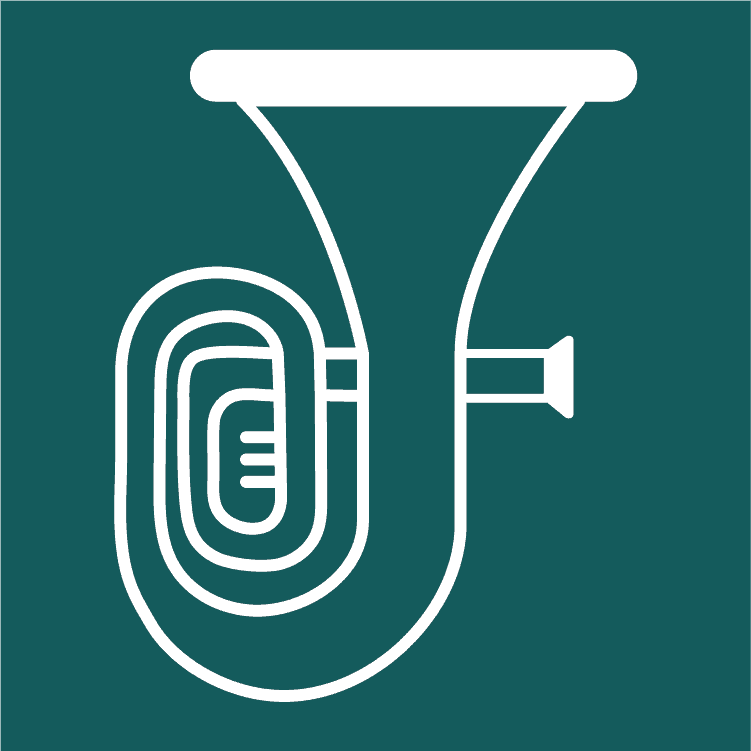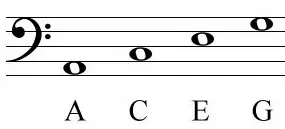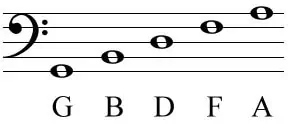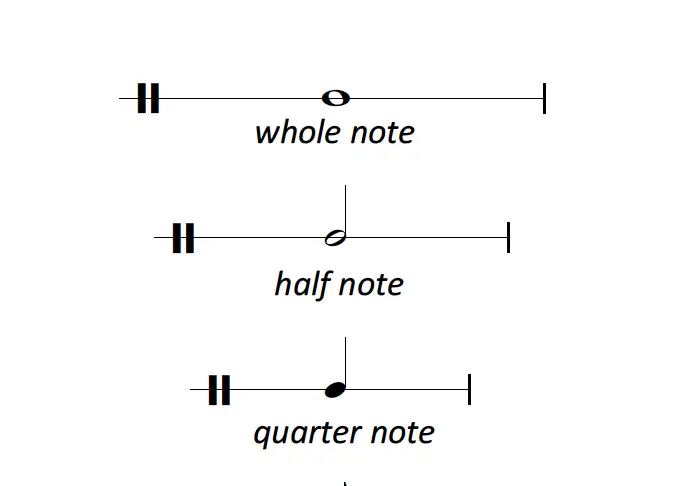how to Read Tuba Sheet Music
The easiest way to read tuba sheet music

Understanding how to read music differs quite a bit from actually playing the tuba. Found in the selection of ‘Beginner’s Guide To Learning The Tuba,’ this segment provides plenty of information and facts to start practising this fantastic skill.
Do We Need Musical Notation?
Music is a language; and like any language, it has a written form. Notation provides musicians around the world as a tool to communicate. A composer writes their piece with specific symbols, and if you can read music, you can understand it, decipher it, and ultimately play it.
But when was it created? Well, truly early illustrations have been discovered on stone tablets as long ago as 2000 B.C. Though the modern-day variety we read now was actually produced by Catholic Monks to help make church music worldwide a standard style!

How Important Is Learning To Read Music?
Let’s be totally truthful. Understanding how to read music is really a tough thing to do.
Some incredible performers never learned, and there are common techniques which include playing by ear, or by using chord patterns, that ultimately don’t need written music.
You can absolutely go down this path if you choose. Just realize that like riding a bike, reading music is actually a skill you never forget – and the benefits massively overshadow the cons.
The Best Way To Learn...
When you learnt to read and write, did you treat them as the same process? Of course not. Controlling your hand moves by using a pencil, understanding the forms of letters, focusing on how letters join together are all a radically different skill from using your eyes to understand what a combination of letters spells.
Reading music, and the procedure of learning to achieve it is the same.
The process of playing the tuba is actually a completely different skill from the process of reading the music which is placed in front of you. Yes, you will discover a relationship. But it’s not the same. So any trainer who is not isolating out those two tasks, and teaching them through different tactics, needs to be fired!
Exactly What Are The Fundamentals Of Reading Musical Notation?
The Bass Clef Staff
For tuba, staff notation is actually structured around something known as the bass staff. This contains a stave (the name for the lines) of five lines and four spaces. It is usually marked with a bass clef (the thing at the start of the line that looks like a backwards C)!
Middle C lies in the space at the very top of the stave, upon an imaginary line.
Notes can sit on a line or in a space. The vertical location (height) of the note specifies the pitch. The higher up the stave, the higher the pitch. When the note has to go higher or below the stave lines, we create mini lines for any note that is higher or lower. Those lines are referred to as ledger lines.

The notes
So that we don’t need to count down from middle C to find our note, we can start using a technique – and it’s as basic as keeping in mind the phrase “All Cows Eat Grass”…

The five lines, bottom part upwards, for the bass staff are: G B D F and A. The simplest way to know them is usually to remember acronyms. The most used is “Good Boys Do Fine Always” – nevertheless I feel you’ll manage to create a significantly better variation!

And easily for completeness, this is actually the entire Bass Clef Staff, with all notes…

The Length of Notes
When we read through music, we read the music notation from the left-hand side to the right. Since we previously discovered which specific note to play, we now must find out the length of time to play it for. The good news is, the printed note actually tells us this as well.
The design of the note shows you how long to play it.
- A whole note (or if you are in the UK, it’s called a Semibreve) is an empty circle and lasts four counts.
- A half note (or if you are in the UK, it’s called a Minim) adds a stem and lasts two counts.
- A quarter note (or if you are in the UK, it’s called a Crotchet) fills in the circle and lasts one count.


How To Read Tuba Sheet Music - Summary
Hurrah!
With this information, if you study it long enough and get used to knowing which line and space equal which note, you will get fluent in reading music in no time.
It won’t surprise you to understand that there is quite a bit more about reading music compared to what I’ve cited above. But everyone has to start somewhere – and if you can reach the level in which you remember all this information and find it simple, you’ll then be ready to jump in more deeply with your search for understanding!
About the Author
Carl Woodcroft
Carl has performed with orchestras including the Orchestra of the Royal Opera House, Covent Garden. He has recorded with Bastille at Abbey Road Studios, played at Glastonbury and the BBC Proms. Carl studied at the Royal Academy of Music and has also performed for The Queen. Interestingly, he has appeared in film and TV as a musician in The Ipcress File remake, Military Wives and Mission: Impossible – Rogue Nation. Carl teaches at Royal Holloway University, Highgate School, Surrey Arts and as a visiting guest at Junior Guildhall.
Other posts by this author
Do You Know What Happens On A Friday?
As regular as I see the sun, I send out an email to you with the four most fantastic things that you absolutely have to know about.
Provided that it has something connected with music, it can wind up in the e-mail. Consider it a music pandora’s box!
Get entry by hitting below.
Read the next post in this series:




